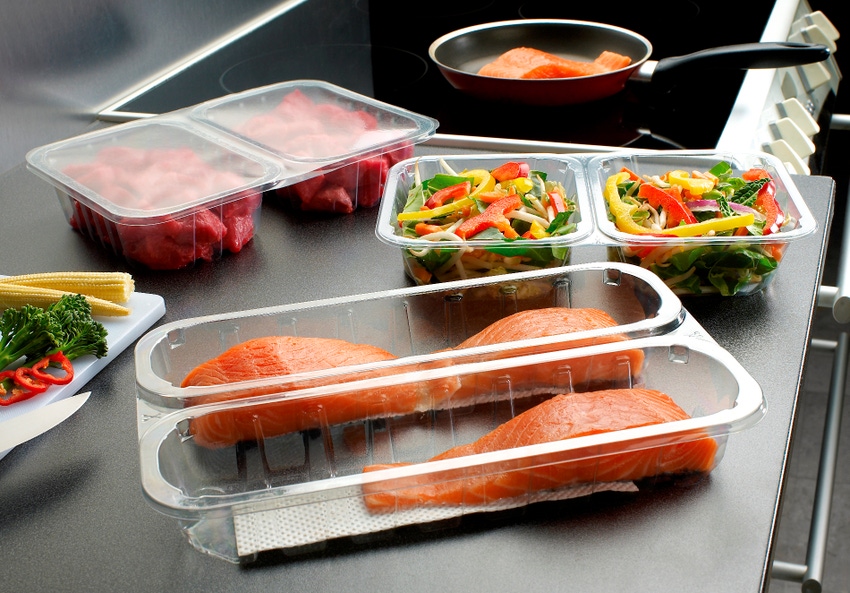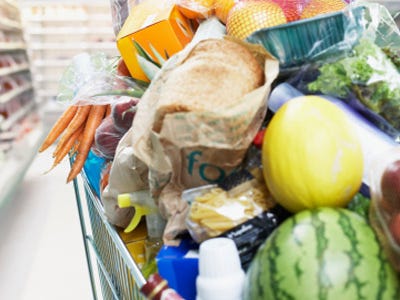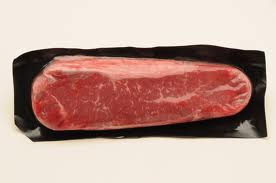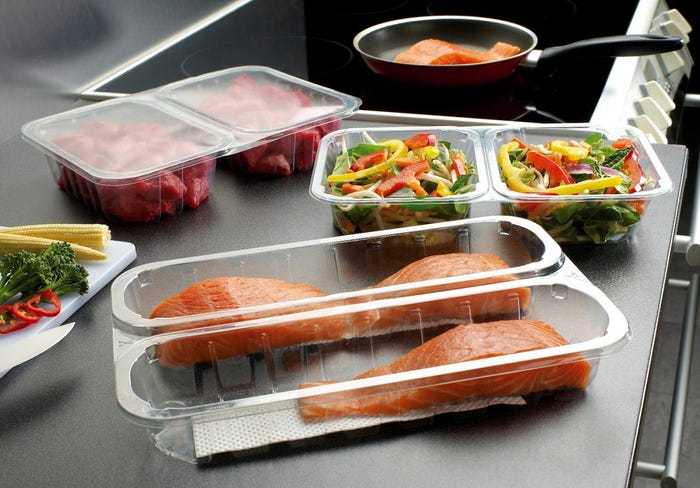It's estimated that one in seven people go to bed hungry each night. But as many companies and individuals work to fight hunger, there's also another issue at hand: food waste.According to a new report by the Institution of Mechanical Engineers, up to 50%, or two billion tonnes of food, produced around the world each year ends up as waste.
March 13, 2013

It's estimated that one in seven people go to bed hungry each night. But as many companies and individuals work to fight hunger, there's also another issue at hand: food waste.
According to a new report by the Institution of Mechanical Engineers, up to 50%, or two billion tonnes of food, produced around the world each year ends up as waste.
The report said this amount of wastage is due to issues as varied as inadequate infrastructure and storage facilities to overly strict sell-by dates, buy-one-get-one free offers and consumers demanding cosmetically perfect food.
 In a time of high food prices and devastating droughts, Dana Gunders, project scientist with the food and agricultural program for the Natural Resources Defense Council (NRDC), said food waste should be an urgent concern.
In a time of high food prices and devastating droughts, Dana Gunders, project scientist with the food and agricultural program for the Natural Resources Defense Council (NRDC), said food waste should be an urgent concern.
Back in August, the NRDC released a new analysis that said Americans are throwing away 40% of food in the U.S., the equivalent of $165 billion in uneaten food each year.
"It was a shock when I first heard about it," she told PlasticsToday. "To wake up to the fact that 40% of food goes uneaten, it really feels like such a waste and a terrible use of resources."
Gunders said there are tangible ways to tackle the food waste problem, and everyone can play a role.
"I think there could be a real opportunity for packaging to help with the problem involving food waste," she said. "The packaging industry can serve as an inherent part of the solution by offering different packaging sizes, innovative packaging that extends the product's life along with ensuring the recyclability of the packaging."
In part one of this feature, PlasticsToday talked with Dow Chemical, DuPont and Linpac Packaging to learn about their different initiatives in helping to reduce food waste.
A package has to perform
"Imagine a world without packaging, what kind of food waste problem would we have then?" asks Greg Bunker, marketing manager, flexible food and specialty packaging at Dow.
Dow believes that one of the best things about food is its packaging and the company views flexible packaging as part of the solution to help reduce food waste. Dow's packaging group recently joined the Save Food initiative, which is a joint campaign instituted by the Food and Agriculture Organization of the United Nations and Messe Düsseldorf GmbH to fight global food loss.
One of Dow's corporate 2015 sustainability goals is to achieve at least three breakthroughs that will significantly help solve the world's major challenges, including affordable and adequate food supply.
Jeff Wooster, Dow's global sustainability leader for plastics, said that if we can reduce global food waste from 40% to 30% with better packaging and other improvements such as food production and distribution systems, we could potentially save enough food to nourish 1 billion people.
"This is clearly a significant task that requires a lot of collaboration and many different solutions, but it demonstrates the potential impact of packaging and value chain collaboration and those are the things that make Greg and me, and our whole team, passionate about what we do every day," he said.
When you consider a package, its primary job is to protect the contents of the food inside, however, not all materials are created equal. Bunker said proper material selection is crucial.
"When one is developing a package you have to make sure it is consistent day in and day out and selecting a material that is cheaper and less reliable can be pretty devastating, such as causing contamination," he said. "You have to ensure the food packaging is properly designed and is of high quality."
Bunker said the company's line of Elite resins provides customers an opportunity to improve packaging efficiency and increase line speeds, while reducing potential leakage, which results in enhanced security and less food waste.
Another product line from Dow is its Affinity polyolefin plastomer that is used in packaged food such as bagged lettuce, which requires a controlled atmosphere that allows the exchange of oxygen and carbon dioxide to maintain freshness.
"Affinity and Elite work to ensure a food package is good and mechanically sound," Bunker said. "We spend a lot of time to make sure we produce materials that are reliable, while also understanding its impact."
Apply science to meet challenges
Yasmin Siddiqi, global development director for DuPont packaging and industrial polymers, said her company has a focus on food security, which it defines as, "when all people at all times have physical, social and economic access to sufficient and nutritious food that meets their dietary need and food preferences for a healthy and active life."
DuPont's resin, Surlyn, and other packaging innovations work to maintain food safety and provide new ways to bring nutrition to food-insecure regions.
Some of the challenges of obtaining food security include reducing food waste.
"As we try to feed the world, packaging is a key component," she said. "It can help extend the shelf life and protects the food itself."
For DuPont's annual Awards for Packaging Innovation, a vacuum packaging that reduces food waste by keeping meat looking and staying fresh longer took top honors last May. The FreshCase packaging from Curwood Inc. reduces food waste by keeping meat fresh and nutritious up to 10 times longer than store-wrapped meat.
looking and staying fresh longer took top honors last May. The FreshCase packaging from Curwood Inc. reduces food waste by keeping meat fresh and nutritious up to 10 times longer than store-wrapped meat.
In addition, the packaging maintains the meat's "appetizing" color through a found-in-nature proprietary additive in the contact layer of the barrier package. DuPont says that many consumers equate color with freshness. The combination of longer shelf life and more appetizing appearance promises to both reduce food waste and increase the availability of proteins in areas further away from food sources.
"The FreshCase packaging technology for meat was elected as the diamond winner and it shows how important this subject was to the judges," she said. "It's a great example of an innovative package."
DuPont packaging and industrial polymers feature an extensive mix of adhesives, sealants, and modifiers, as well as barrier and peelable-lidding resins. When it comes to protection and waste reduction, sealants can protect the package by providing a more consistent seal integrity on all sides of a package and avoid weak seal spots that can cause leaks, Siddiqi said.
Food waste, not mission impossible
Food packaging companies are working smarter than ever before to develop packaging which is lighter, more sustainable and more recyclable, but are still fit for purpose in terms of protecting, preserving and presenting food to a high standard, said Alan Davey, director of innovation at Linpac Packaging.
Research carried out by The Department for Environment, Food and Rural Affairs (Defra), a government department in the UK, showed single-person households are some of the worst offenders when it comes to food waste, throwing away 22% of the food they buy.
 In response, Linpac Packaging developed its split pack range for fresh and cooked meats. The packs, which allow contents to be divided into separate, sealed, portion-size compartments, in modified atmosphere packaging (MAP), lets consumers store food in the fridge for longer without compromising food safety.
In response, Linpac Packaging developed its split pack range for fresh and cooked meats. The packs, which allow contents to be divided into separate, sealed, portion-size compartments, in modified atmosphere packaging (MAP), lets consumers store food in the fridge for longer without compromising food safety.
"We are acutely aware of our role in helping consumers minimize waste by designing innovative packaging solutions that enable them to only select the food they want to use and in maximizing the shelf life of stored products in their homes," Davey said.
Linpac Packaging has also teamed up with Addmaster to develop a range of trays and films with built-in antimicrobial technology to reduce bacteria growth on the outer packaging of fresh meat. The technology helps to reduce spoilage and increase the shelf life of food by inhibiting the growth of bacteria, molds and yeast, as well as reduce the risk of contamination from pathogens such as E.Coli, salmonella, listeria and campylobacter in poultry.
Additionally, Linpac is also about to launch a new range of products for the chilled retail and deli food convenience sector, which are foods designed to be eaten on the go or after minimal preparation. The Freshware range will be portion-sized to suit single or smaller servings, helping consumers reduce food waste at home and the containers' design makes them easy to fill, meaning less food is wasted during packing, Davey said.
For the foodservice sector, Linpac Packaging's HOTpacs are portion-controlled to prevent over-filling, which Davey said helps to reduce food waste and may increase the food service operator's bottom line.
Davey said the Institution of Mechanical Engineers food waste study shows how important it is for retailers, food manufacturers and the packaging industry to work closer together to tackle this problem.
"At present, it seems like we have a real mountain to climb where food waste is concerned," Davey said. "But if organizations that are in a position to make a difference commit to working closer together and gaining a better understanding of the wider supply chain, reducing food waste is not mission impossible."
Read Part 2 of PlasticsToday's packaging to reduce food waste report.
About the Author(s)
You May Also Like


